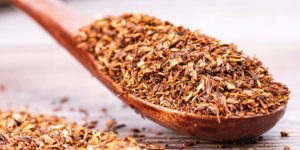 Cherry blossom season is upon us! Between March and April, barren branches of cherry blossom trees explode into color, creating a beautiful sight to behold.
Cherry blossom season is upon us! Between March and April, barren branches of cherry blossom trees explode into color, creating a beautiful sight to behold.
In Japan, where the tradition of celebrating the blooming of cherry blossom trees started, festivities will be in full swing, with families and friends gathering outdoors in parks to have picnics, drink sake and take in the view of dormant trees bursting into life. It’s such a significant event in the country that the weather bureau makes a yearly announcement of the blossom forecast, predicting when and where trees will be at their prime for everyone’s viewing pleasure. There are even websites that track hanami hotspots.
The tradition has caught on and spread far beyond Japan’s borders. Macon, Georgia’s International Cherry Blossom Festival is a huge festival with more than a few days worth of events. It’s no surprise since Macon is known as the cherry blossom capital of the world, with hundreds of thousands of trees that paint the town pink every year. Other notable celebrations in the United States include the National Cherry Blossom Festival in DC and the Sakura Mastsuri Cherry Blossom Festival at the Brooklyn Botanical Garden in New York.
There are a few different types of cherry blossom trees, each on producing their own distinctly shaped and colored blossoms. The Yoshino produces single white blossoms. From far away, a group of these trees can easily look like big fluffy white clouds rising up from the ground. Akenobo cherry trees give way to single, pastel-pink blossoms. Kwanzan and Fugenzo trees both produce pink double blossoms, although the flowers found on the latter tree are not as clear, and have a bit more rouge in their complexion. Shirofugen trees yield white flowers that later transition to pink while Sargent Cherries are known for a more saturated and intense pink. With so many varieties, it’s easy how you can make a full day of tracking down all different kinds of blossoms!
The Kwanzan grows primarily in East Potomac Park and comes into bloom two weeks after the Yoshino. It produces clusters of clear pink double blossoms. East Potomac Park also has Fugenzo, which produces rosy pink double blossoms, and Shirofugen, which produces white double blossoms that age to pink.[17][19]
To celebrate the advent of cherry blossoms, the Tea Smith is featuring our very own Cherry Blossom Tea. March and April are the best time to enjoy teas blended with fresh cherry blossoms in-season. It’s a Sencha tea punctuated with cherry bits that evokes the freshness and promise of spring. Happy Hanami!

